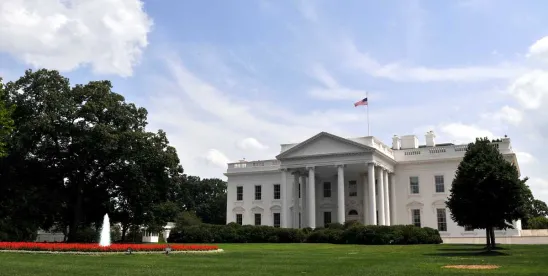The White House Council on Environmental Quality (CEQ) today published its final rule to implement “Phase 2” of its National Environmental Policy Act (NEPA) regulation amendments. This is CEQ’s final step to unwind many of the Trump Administration’s 2020 NEPA changes – the first sweeping revisions to NEPA since CEQ issued its NEPA implementing regulations in 1978 (as described in our
January 2020 and July 2020 client alerts).
After taking office in 2021, the Biden Administration initiated a comprehensive and phased rulemaking to largely revert to the 1978 regulations (as described in our October 2021, April 2022, and August 2023 client alerts).
In “Phase 1,” CEQ made three changes to the NEPA regulations:
- It restored the 1978 requirement for agencies to consider the direct, indirect, and cumulative impacts of a proposed action.
- It clarified that agencies have discretion to consider a variety of factors by removing a requirement that an agency base the purpose and need on the goals of an applicant.
- It removed language that could be construed to limit agencies’ authority to develop NEPA implementing procedures that go beyond the minimum requirements set forth in the NEPA regulations.
“Phase 2” is a broader rulemaking to “modernize” the NEPA implementing regulations (ironically) by looking back to 1978 but also making changes in an effort to accelerate the timeline for approvals of clean energy projects. Certain changes that likely will speed up federal agency approvals are:
- Narrowing the scope of projects subject to NEPA review by requiring that the agency’s “major federal action” be one subject to “substantial” federal control
- Detailing new methods for establishing categorical exclusions (CEs)
- Allowing agencies to borrow CE decisions of other agencies
- Encouraging the use of programmatic environmental reviews for proposed actions that are broad in reach (overarching programs and policies)
- Confirming page limits and timelines for environmental reviews
Notably, the final rule did not include the proposed “Innovative Approaches to NEPA Reviews” section, which would have allowed agencies to pursue innovative approaches to comply with NEPA to address extreme environmental challenges.
CEQ proposed this new concept to be distinct from existing emergency provisions, with different considerations and criteria. Ultimately, however, CEQ decided not to include this section in its final rule, explaining that the new methods of establishing CEs and the updated provisions on programmatic environmental reviews provide agencies sufficient flexibility to innovate and address extreme environmental challenges.
However, many of the changes increase the regulatory burden by:
- Restoring the analysis of a project’s “context” and “intensity”
- Codifying that an Environmental Impact Statement (EIS) must include analysis of climate change effects and environmental justice
- Clarifying that in establishing deadlines NEPA review agencies may consider the “degree to which a substantial dispute exists as to the size, location, nature, or consequences of the proposed action and its effects”
- Requiring that agencies prepare supplements to draft or final EIS if the action is incomplete/ongoing and the agency makes changes to the action or there are substantial new circumstances for information
- Removing the “reasonable number” limitation on the alternatives analysis and instead requiring identification of the “environmentally preferable alternative,” which may be the proposed action, the no action alternative, or a reasonable alternative
- Removing language that the CEQ regulations create no presumption that violation of NEPA is a basis for injunctive relief or for a finding of irreparable harm
Furthermore, the final rule expands agency review in preparing an Environmental Assessment (EA) by:
- Mandating that agencies consider “connected actions” in any NEPA review, not just in preparing an EIS
- Encouraging agencies to supplement EAs if the action is incomplete/ongoing and the agency makes changes to the action or there are substantial new circumstances or information
- Differentiating between a finding of no significant impact (FONSI) and a “mitigated” FONSI, in which the agency determines, based on the EA, that NEPA does not require preparation of an EIS because the proposed action will not have significant effects due to mitigation
- Requiring agencies to prepare a monitoring and compliance plan for mitigation where there is a mitigated FONSI
- Expanding the provisions for public and governmental engagement
- Encouraging agencies to consider applying the extensive EIS requirements for scoping when preparing an EA
The final rule is effective July 1, 2024, and CEQ has established July 1, 2025 for agencies (such as the Army Corps and Department of Energy) to revise their procedures to implement these changes. How they integrate these changes into their permitting processes will be the true indicator of whether the final rule does, indeed, provide agencies with “new and faster tools to improve the efficiency and effectiveness of environmental reviews.”





 />i
/>i

